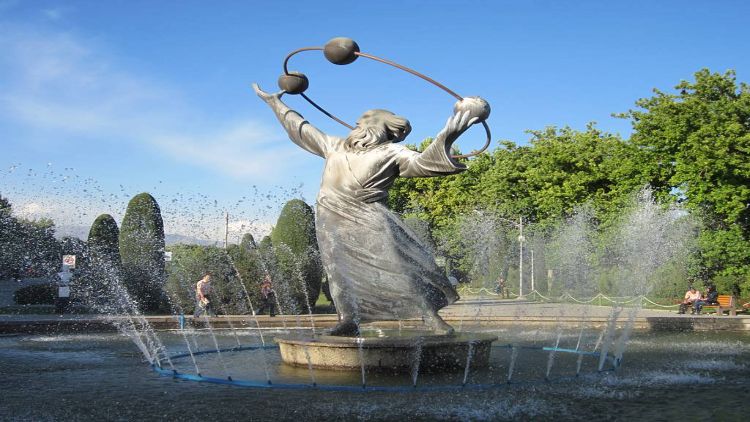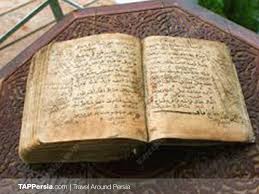
.Manjeet Thakur / New Delhi
Abu Rayhan al-Biruni commonly known as Al-Biruni, one of the greatest scientists in the world was around when the Islamic world in the east was facing political turmoil. According to the Encyclopaedia Britannica, al-Biruni was born on 4 September 973 AD in Khwarizm in the Khorasan province of the present-day Uzbekistan. Interestingly he came from the same region from where great scientist, Al-Khwarizmi was. Al-Biruni died in Ghazni, Afghanistan in 1052 that was called Ghazna back then.
To call Al-Biruni a scientist is unfair; he was an omniscient. He was a mathematician, astronomer, ethnographer, anthropologist, historian and geographer all rolled into one person.
Al-Biruni had worked under six different rulers and all of them were always ready to pick up a war and ending with creating violence. However, despite being at the center of these violent incidents, al-Biruni managed to refine his versatility.
Al-Biruni was born in Khwarizm on the other side of Amu river, and was educated by Khwarizm-Shah Amir Abu Nasr Mansur ibn Iraq, a member of the royal family and possibly a patron of al-Biruni. In fact, some scholars believe that the mathematical works of a Princess were actually the works of al-Biruni. Such things were common in the era of monarchy.

There is not much known about al-Biruni's personal life, but in a medieval era book al-Biruni is quoted as saying he did not know about his father.
It seems that al-Biruni's patronage of the Prince of Khwarism did not last long; a courtier had revolted and killed him. This triggered a civil war in Khwarism (996–998 AD) and al-Biruni fled and took refuge with the rulers of the Samyids who ruled most of the present-day eastern Iran and Afghanistan.
Shortly after al-Biruni came to Bukhara, the seat of power of Samaridans, another dissident from Khwarism Qaboos ibn Voshamgir also sought support of the Samanids to gain power. It seems that the Samaridans helped him because the rest of the accounts of al-Biruni are as part of his association with the Kabus rulers who made Gurgan, a city near the Caspian Sea, its capital. Al-Biruni met another philosopher-scientist, Ibn-Sina, in the court of the Qaboos, and they exchanged philosophical ideas. Al-Biruni has devoted his book al-Athar al-Baqiya n al-Qur'un al-Khalia (Order of Ancient Nations) to Quboos.
For some time, al-Biruni continued to travel — in fact he was rather running from the war and constantly seeking patrons — and after that the whole area of the Samanidas came under the occupation of Subuktagin's cruel son, Mahmud.

In 998, Mahmud captured Ghazna and took over its capital Hanna; he ordered both al-Biruni and Ibn Sina to work in his court. Ibn Sina somehow escaped but al-Biruni continued to work in Ghazna until his last days, when he accompanied Mahmud Gajhni with his army for an attack on India. Al-Biruni was undoubtedly the reluctant guest of his ruthless murderer master, yet he chronicled his travels in a spectacular manner. From the subtle details he gave about Hindustan, he became a scientist as well as an ethnographer, anthropologist and great historian of Indian affairs.
It was also easy for historians to make a list of al-Biruni's work as he had prepared such a list when he was 60-year-old. Although, al-Biruni lived for more than 70 years, some of his later works are not included in this list. Combining this list and the works discovered later, according to historians (Encyclopedia Britannica) al-Biruni has written a total of 146 books, each of which is about 90 pages. Half of them are on astronomy and mathematics. But only 22 of them have been found and half of them have been published.
His work on Indian culture is considered to be the best one in giving details about Hindustan. Its title is Tehkiq Ma Lil-Hind Min Makulah Maqbula Fe Al Aql Aa Maadurlaah (Tehkiq-e-Hind). This book records everything that al-Biruni could see and understand about India. It describes the science, religion, literature and customs of India.
One of his important works is 'Al-Qanun al-Masoodi', dedicated to Mahmud Ghaznavi's son Masood, in which al-Biruni collected all the astronomical knowledge from sources available at the time, such as Ptolemy's 'Almagast' and at that time Updated in terms of knowledge. However, al-Biruni's contribution can be outlined in each of its chapters. For example, al-Biruni introduced new algebraic techniques to solve third-level equations. He established the fine difference between the speed of solar apogee and the speed of precession. He also found easy ways to achieve astronomical results.

His work at that time, Al-Tahfim li-Awa'il Sinaat al-Tanzin (sources of astronomy) is still considered the best work of his times. Al-Biruni's unique contribution to mathematical geography is the method of accurately measuring the distance between cities. He silenced the ulema who questioned his mathematics by measuring the distance from Ghazna to Kaaba though his mathematical formula.
Al-Biruni questioned the theory of formation of mountains and through fossils proved that the earth must have been under water at some time. He has also raised this point through Kitab-ul-Hind.
His book Istiab al-Wuzooh al-Mumkinah Phi Sanat al-Asturlab (Exhaustive Book on Astrolabes) talks about the possibilities of the movements of the earth.
Al-Biruni was undoubtedly one of the most versatile talent of his time.
(This article is part of the World of Knowledge Series)
To the readers….
We welcome feedback from readers on this. You are free to give your opinions, suggestions and critique of this article and send it to us on the mail: [email protected])
